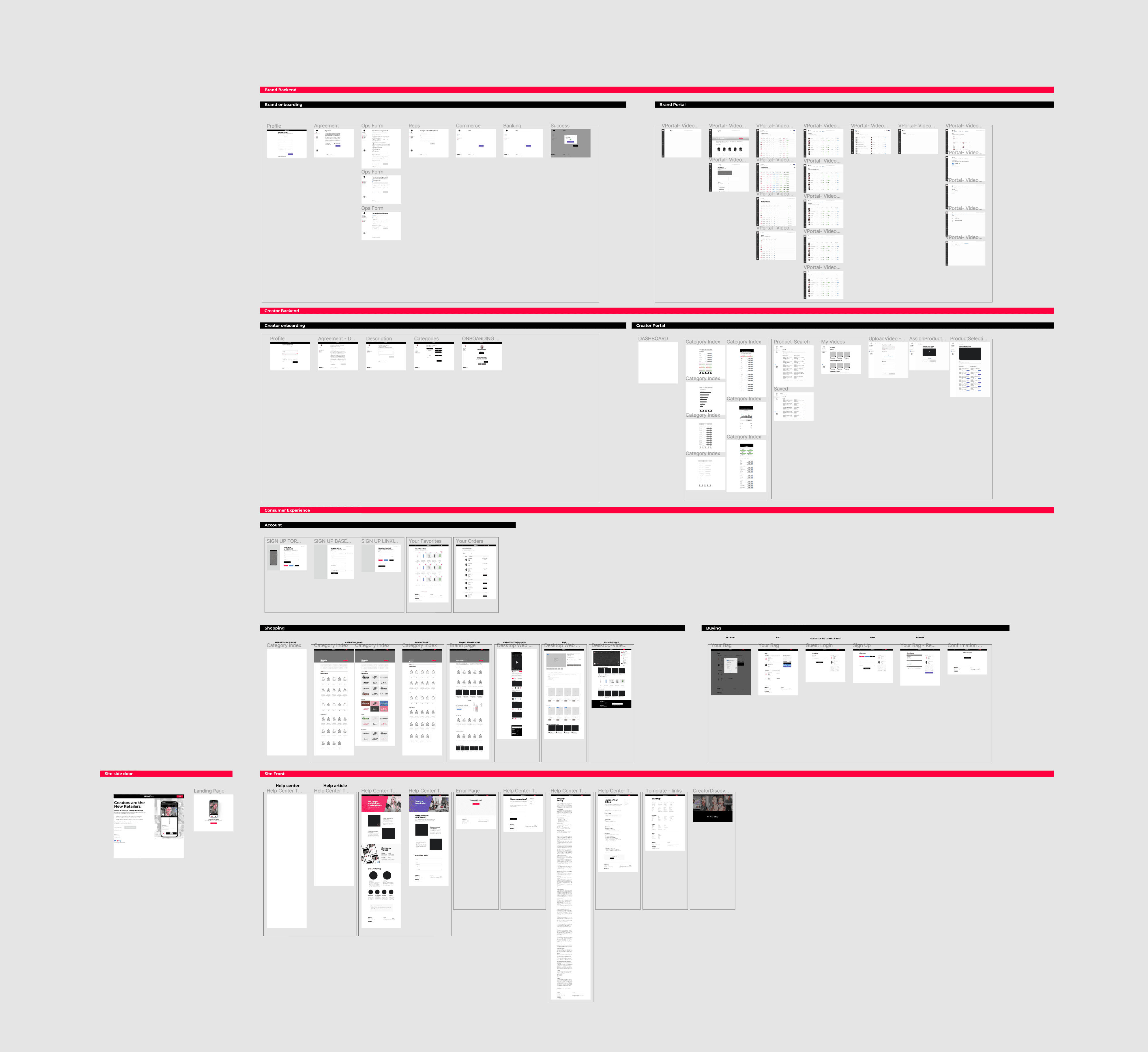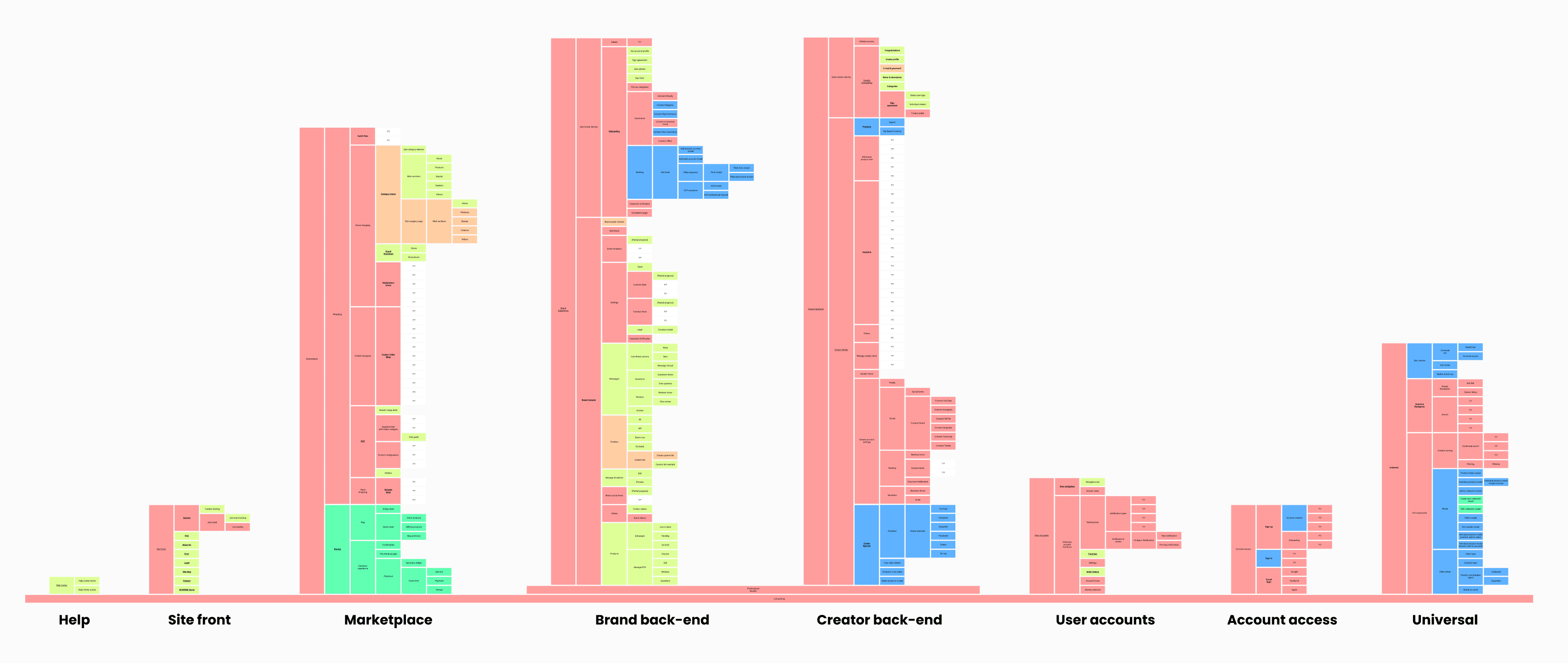Getting an understanding of how the product worked was a challenge because there was never just one answer. This was because there was no single source of the truth.
To create this single source of truth, I spent a month doing detective work, meeting with every stakeholder, figuring out what functionality had been built that was not documented, and figuring out what documentation was for discarded ideas. There was also just a lot of missing functionality, especially on the back-end, that needed basic designs.
The above view is the blueprint for the MVP per the company's high-level business plans. This kind of clear view of the product is rare at most companies, and in this case, it was a revelation.
I visualized the product
While the Figma mapping was an important step, it was not enough. The product had to be mapped at a strategic level, allowing VP and C-level leadership to get a sense of development progress and feature balance. Using the XenBuild system, I mapped the product out and applied the map to several types of product-related information including project status and even tracking of internal nomenclature.
All of this work was necessary to create a picture of the ground-level reality which the C-level were not following closely due to a focus on business deals. The image above shows that, compared to what the company needed to build (in red), what the company actually had built was lacking.

